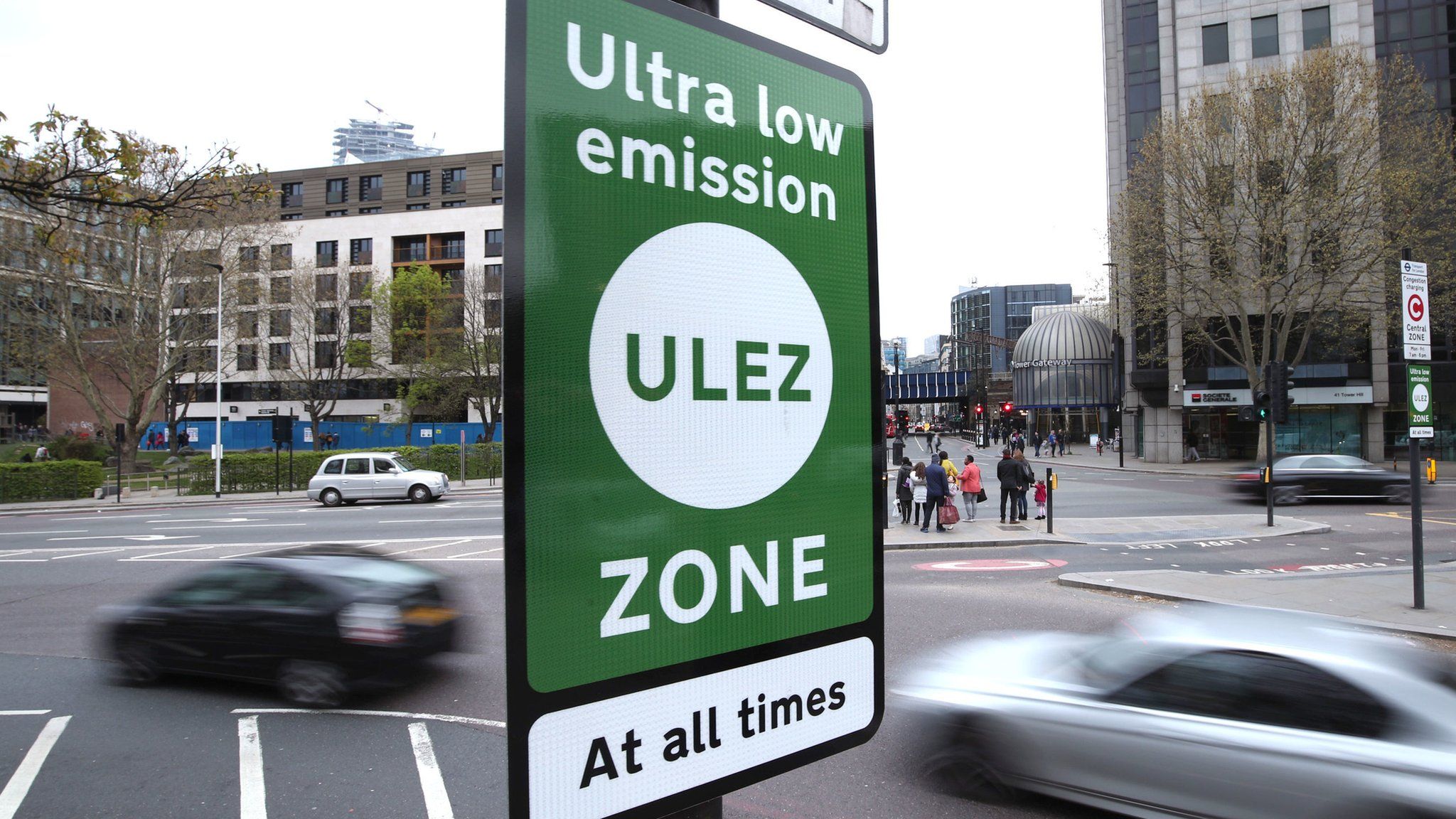
By Mark Poynting
Climate and environment researcher, BBC News
Owners of the most polluting vehicles will have to pay a charge to drive anywhere in London from Tuesday.
The expansion of the Ultra Low Emission Zone (Ulez) is one of many schemes intended to improve air quality in the UK and Europe.
What is the aim of clean-air zones?
In many UK cities, including all London boroughs, air pollution far exceeds limits recommended by the World Health Organization (WHO).
The Mayor of London says this is why Ulez should be expanded to cover outer London.
There is very strong evidence that air pollution can damage human health. The UK government considers it the largest environmental risk to public health.
High levels of air pollutants – for example, nitrogen dioxide (NO2) and tiny particles known as fine particulate matter (PM2.5) – can cause and worsen breathing problems such as asthma. It can also affect people with heart conditions.
A major source of these pollutants is road transport – from exhausts, tyres and brakes.
Tackling climate change, which is driven by greenhouse gas emissions, such as carbon dioxide, isn’t the main goal of clean-air zones.
Do clean-air zones work?
Most studies show that clean-air zones reduce air pollution.
Ulez has covered inner London since 2021, and central London since 2019.
By October 2022, Ulez had reduced NO2 levels next to the roadside by an estimated 46% in central London and by 21% in inner London, according to a City Hall report reviewed by Imperial College London.
Air quality also improved in places on the boundary of the Ulez area – a finding also noted in research into German low-emission zones – suggesting drivers were being persuaded to switch to less-polluting vehicles rather than simply driving further to avoid the zone.
Ulez has had a smaller effect away from roadsides. A 2021 study suggested the first stage of Ulez – which covered only central London – reduced NO2 levels by less than 3% when averaged across London, and PM2.5 changes were insignificant.
However, the study highlighted that Ulez had been part of a wider air-quality scheme, including an original low-emission zone – which has covered all of London since 2008 – and measures to switch to cleaner buses and taxis. Taken together, these measures have led to much greater improvements to air quality.
Reductions in air pollution have also been reported as a result of other clean-air zones, such as those in Birmingham, Berlin and Amsterdam.
A small number of studies have reported more mixed results. A 2015 review of several zones across Europe suggested that schemes including restrictions on cars tended to be more effective than those targeting only heavier vehicles.
The methods used for the studies vary, but many take into account other factors that can affect air pollution, such as weather patterns, traffic volumes and longer-term improvements from the declining use of coal, for example.
Will the Ulez expansion work?
About 90% of cars seen driving in outer London already meet the emissions standards. Generally, exempt cars are those first registered after 2005 for petrol, and after September 2015 for diesel.
The charge for more-polluting older vehicles is generally £12.50 a day to drive within the zone, with some exceptions.
Although air pollution is higher in inner London, it has a greater effect on health in outer London. One reason is that there is a higher proportion of more vulnerable elderly people.
Modelling commissioned by Transport for London projects that the expansion of Ulez will reduce emissions of nitrogen oxides from transport by 6.9% in outer London. Levels of fine particulate matter will be less affected.
This is expected to reduce NO2 levels in outer London by 1.5% on average.
That suggests that on its own, the expansion of Ulez will have a relatively small effect on air pollution – and air quality would still fall well short of WHO standards.
And clean-air zones can have a greater impact by combining them with other road transport policies aimed at cleaner travel, according to a Public Health England report.
Reductions in air pollution from other areas – such as from agriculture, construction and wood burning in homes – will also be needed to bring air quality to safer levels, the report says.








